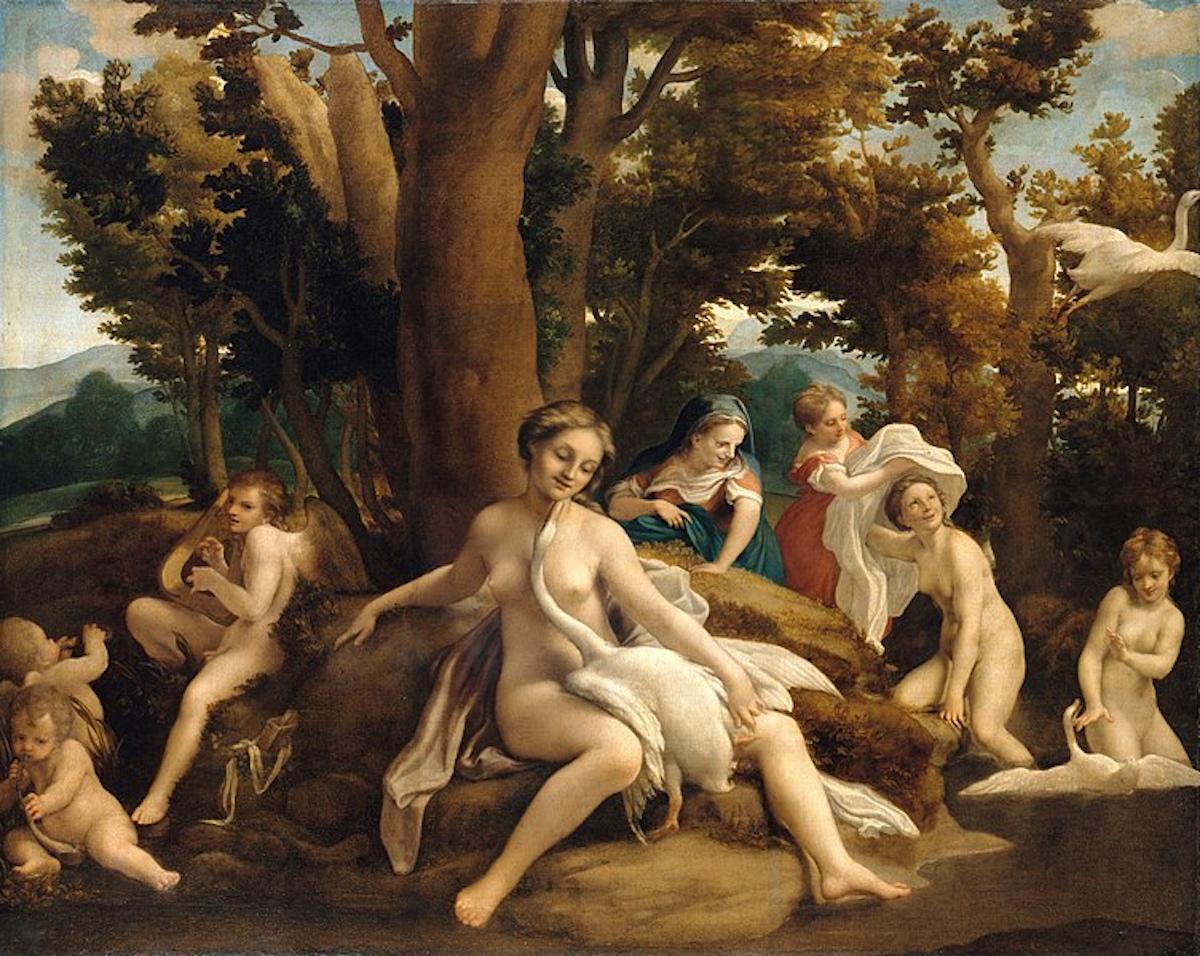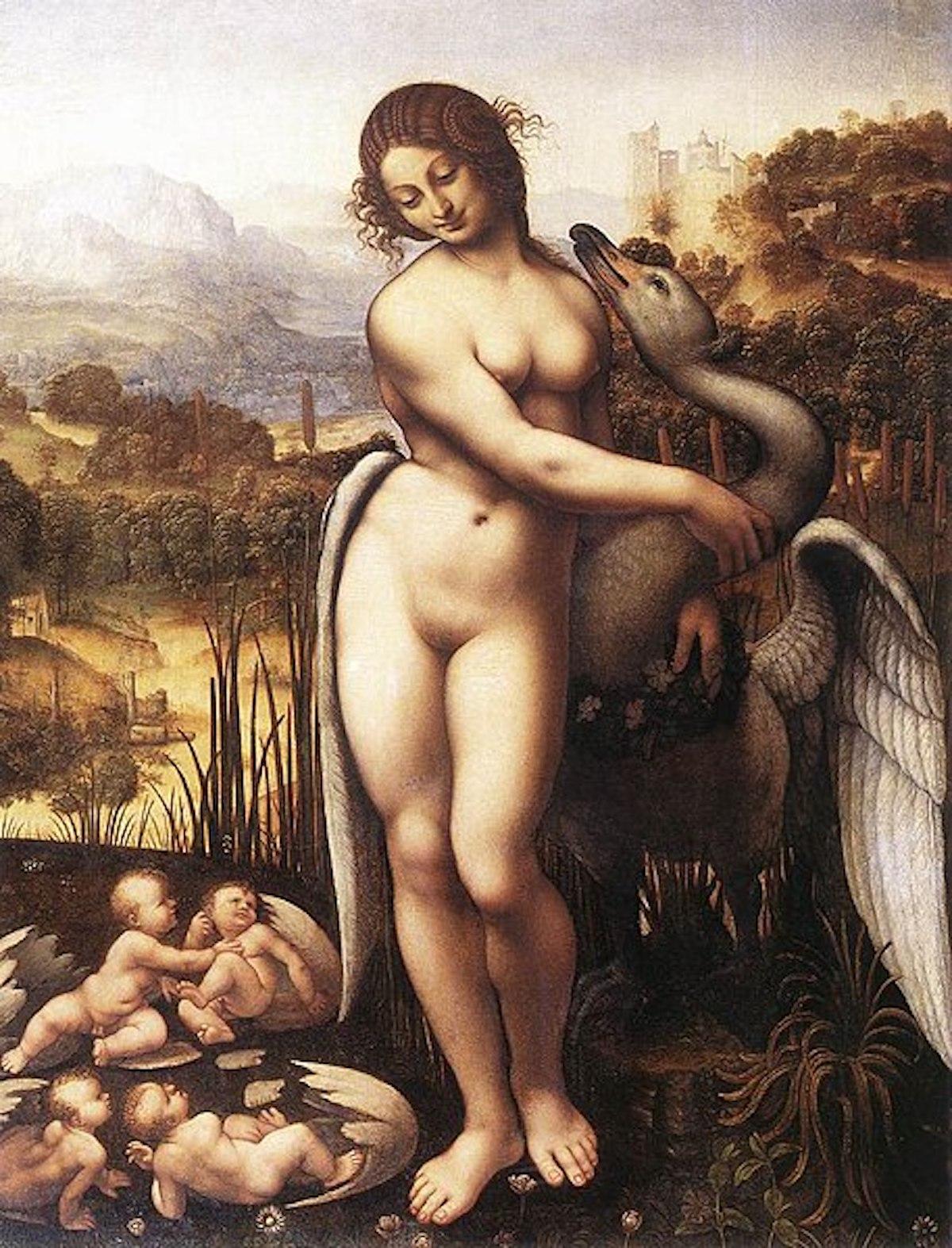What we know about the Trojan War straddles myth and history.
The rape of Leda by Zeus was believed to have not only led to this great war, but also to the Golden Age of Greece, opening the way to the modern age of art, literature, and democracy. Also known as the Classical Age, fifth to fourth centuries BCE, Greece flourished during this time under the rule of Alexander the Great, whose tutor was Aristotle. Greek theatre, the Olympic Games, as well as democracy were creations of the Golden Age.
In 353 BCE, Timotheos, a Greek sculptor, used Leda and the Swan as the subject of his art. The Greek myth was well-known throughout the Middle Ages and became especially popular during the Italian Renaissance. Spanning the fifteenth and sixteenth centuries, Renaissance Erotica produced many works by famous artists depicting a woman copulating with a swan. This rendition was more acceptable than showing a man and woman having sex.
































